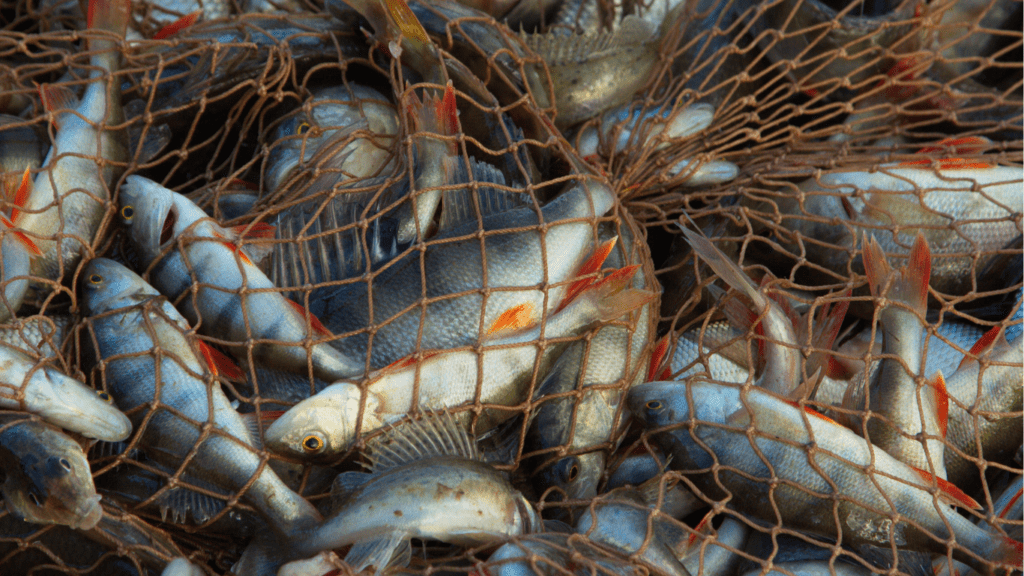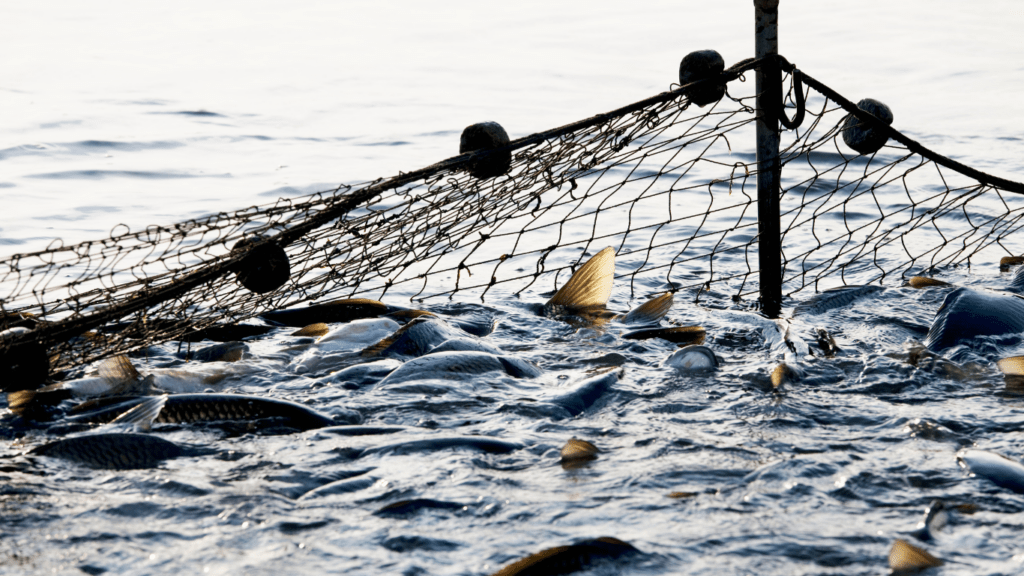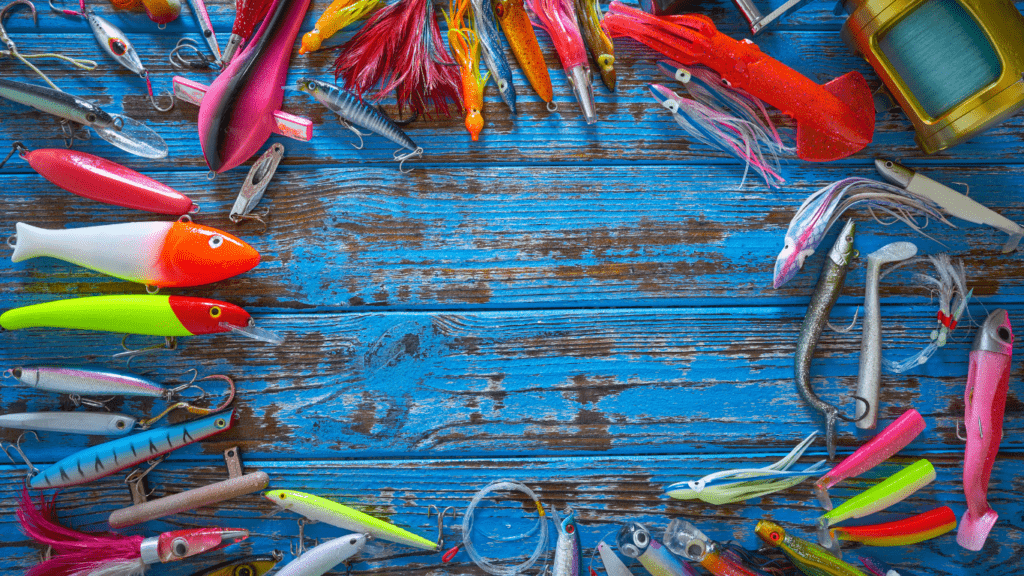The Alarming Reality of Fish Declines
Global fish stocks are depleting at unprecedented rates, with 34% of fisheries classified as overfished according to the UN Food and Agriculture Organization (FAO). Species like Atlantic cod and bluefin tuna have decreased by over 70% in just a few decades. These declines threaten not only marine biodiversity but also the food security and economic stability of millions of people.
Overfishing disrupts marine ecosystems by removing key species, such as predatory fish, faster than they can reproduce. This imbalance often results in cascading effects, like the overpopulation of smaller species or the collapse of entire ecosystems. For example, the decline of large predatory fish has contributed to jellyfish blooms in multiple regions, further destabilizing marine habitats.
Illegal, unreported, and unregulated (IUU) fishing amplifies this crisis, accounting for up to 26 million metric tons of fish removed annually. High levels of bycatch—non-target species accidentally caught during fishing—further degrade populations. Sharks and turtles, for instance, are frequently caught and discarded, undermining their already vulnerable populations.
Understanding Overfishing
Overfishing occurs when fish are caught faster than they can reproduce, depleting stock levels and disrupting marine ecosystems. It’s one of the leading causes of fish population declines worldwide.
What Is Overfishing?
Overfishing refers to the excessive harvest of fish beyond sustainable levels. Fisheries remove fish stocks faster than they can naturally replenish, leading to population declines. For example, Atlantic bluefin tuna populations have dropped over 70% in just a few decades due to heightened demand and aggressive fishing methods. Overfishing affects:
- species diversity
- disrupts ecological food chains
- reduces the availability of essential resources for dependent communities
Key Drivers of Overfishing
Several factors contribute to overfishing, making it an entrenched global issue.
- Industrialized Fishing Practices: Advanced technologies like large trawlers and sonar equipment increase fish capture rates, leaving insufficient time for stock recovery. For instance, bottom trawling destroys seabed habitats while capturing significant bycatch.
- High Consumer Demand: Industries and consumers create a spike in fishing pressure, particularly for species like shrimp, tuna, and salmon, leading to overexploitation.
- Illegal, Unreported, and Unregulated (IUU) Fishing: IUU fishing accounts for up to 26 million metric tons of fish annually, further reducing sustainable stock levels.
- Weak Fisheries Management: Poor regulations allow overfishing to persist, often overlooking essential measures such as quotas and protected areas.
- Targeting High-Value Species: Overfishing primarily affects commercially valuable species like cod and groupers, prompting imbalances across entire marine ecosystems.
Scientific Findings on Shocking Fish Declines

Recent scientific studies reveal alarming trends in fish population declines caused by overfishing. These findings highlight critical risks to biodiversity, food security, and ecosystem stability.
Global Fish Population Trends
Data from global assessments show a sharp drop in fish stocks over recent decades. According to the FAO, approximately 34% of global fisheries are overfished, a number that has doubled since the 1970s. Species like Atlantic cod have dropped over 70%, with bluefin tuna experiencing a similar decline due to unsustainable fishing practices. IUU fishing contributes significantly to these numbers, removing an estimated 26 million metric tons of fish annually, often targeting vulnerable populations. Studies also indicate that small pelagic fish, such as sardines and anchovies, are increasingly threatened as demand rises in global markets.
The World Wide Fund for Nature (WWF) reports that fishery collapses now affect about 40% of species critical to marine ecosystems. This overexploitation disrupts natural regeneration processes, leaving exploited species unable to recover. Compounding this, advanced fishing technologies and gear increase catch speeds, exacerbating the overall depletion rate.
Ecosystem Impacts of Declining Fish Stocks
Scientific evaluations show that declining fish stocks destabilize marine ecosystems. Overfishing often removes keystone species, such as tuna, groupers, and sharks, which play essential roles in maintaining ecological balance. For example, the depletion of predatory fish allows smaller prey species to overpopulate, leading to overgrazing on coral reefs and seagrass beds. This chain reaction weakens habitat structures and reduces overall biodiversity.
In addition to structural damage, fish stock declines prompt unpredictable shifts in ecosystem dynamics. A well-documented example involves jellyfish blooms resulting from the overfishing of competitors and predators, disrupting plankton cycles and further straining marine food webs. Research also connects the reduced biomass of fish to diminished nutrient cycling, particularly in ecosystems reliant on migratory species for nutrient transfer, such as coastal coral systems.
These findings underscore the interconnected consequences of overfishing, illustrating not only direct population declines but also broader ecosystem instability.
The Role of Humans in Overfishing
Human actions have driven fish population declines, with overfishing fueled by industrial practices and growing consumer demand. Scientists emphasize these two factors as major contributors to the crisis.
Industrial Fishing Practices
Industrial fishing escalates overfishing through the use of massive fleets and advanced technologies. Trawling, longlines, and purse seines, for example, extract vast quantities of fish in single operations, often targeting entire schools. Data from the FAO shows that industrial fleets account for 77% of total global fish catches. High-efficiency methods like bottom trawling not only deplete fish stocks but also destroy underwater ecosystems, such as coral reefs and seagrass beds, essential for biodiversity. Frequently exceeding sustainable limits, industrial operations create deficits where populations cannot regenerate.
Bycatch, or the incidental capture of non-target species, is another issue. Studies reveal annual bycatch levels reaching 20% of total marine catches, with sharks, sea turtles, and dolphins among the frequent casualties. This practice both threatens vulnerable species and disrupts marine food chains, worsening ecosystem imbalances.
The Influence of Consumer Demand
Consumer demand for seafood sustains overfishing by encouraging high harvest rates. Popular species like salmon, tuna, and cod face immense pressure as they remain staples in global diets despite population declines. In recent decades, global fish consumption per capita has surged from 9.9 kilograms in the 1960s to 20.5 kilograms by 2020, according to the FAO. This rapid increase drives unsustainable production, pushing fisheries to meet rising demand at the expense of ecological stability.
Luxury seafood trends, including bluefin tuna in sushi and Chilean sea bass in fine dining, amplify overfishing. The economic value of high-demand species incentivizes illegal fishing and overexploitation. Scientists warn that maintaining unchecked consumption habits risks global fishery collapses, threatening food security for billions who rely on fish for protein and livelihood.





